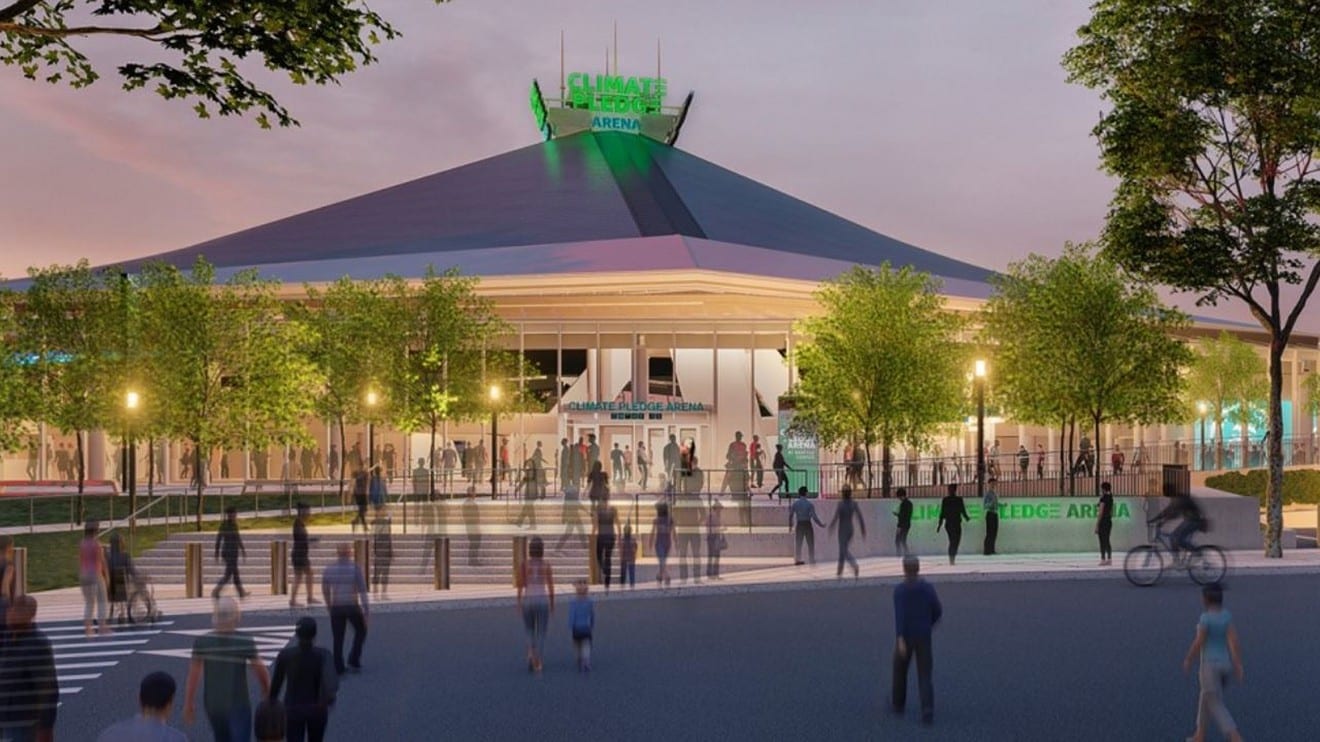 A rendering of the new Climate Pledge Arena. Photo Credit: Climate Pledge Arena.
A rendering of the new Climate Pledge Arena. Photo Credit: Climate Pledge Arena. When large-scale events are safe for the public to attend, the Climate Pledge Arena (formerly Key Arena) could draw crowds of more than 10,000 people up to 250 days per year.
This means that we need to plan on making space for more people to move through and around Belltown, Uptown, and South Lake Union.
While we’re working to make it smooth and easy for people to walk, bike, and take transit to the new arena, we recognize people may drive there too. One part of our plan to keep people moving (our North Downtown Mobility Action Plan) is designing the curbspace to meet the needs of residents, businesses, and visitors.
We want to hear from you! Please submit your comments by the end of March:
Visit our website to see the full draft proposal
Fill out this brief online comment form
Attend the virtual Restricted Parking Zone (RPZ) public hearing in March; date to be announced on website in February
Contact us at UptownAccess@seattle.gov or (206) 584-3443

When we talk about the curbspace, we mean the outer lanes of our streets that are next to the sidewalk. Often these areas are designated for bus stops, load zones, or parking.
With active curbside management, including updates to parking restrictions, we can support access for residents, businesses, and visitors and help prevent traffic gridlock in Uptown on game days.
Almost 450 people responded to our survey this fall. Your voices helped guide our draft curbspace access and parking proposal for the area.
84% of survey respondents agreed that our curbspace plan in Uptown should support these goals:
- Prioritize access for businesses, residents, and visitors in a quickly growing urban center.
- Discourage Arena eventgoers from using area on-street parking so that there will be continue to be spaces available for residents and customers coming to local businesses.
- Prioritize transit, biking, and loading, while also managing ride-hailing to support a sustainable and equitable transportation system.
Based on the survey results, here’s our draft plan that we’re seeking feedback on! Comments are due by end of March.

Expand and update Restricted Parking Zone 13 (RPZ 13) to prioritize parking for area residents and visitors making short-term stays. Updates to RPZ 13 would discourage eventgoers from parking on the street.
- The current RPZ 13 would be expanded to the orange shaded area in the map above.
- Updates to the RPZ 13 parking restrictions would allow 2-hour parking for vehicles without Zone 13 permits between the hours of 7 AM and 10 PM, seven days per week.
- Residents can obtain permits to park in RPZ 13 anytime. Permits currently cost $65 per vehicle for a two-year cycle. A $10 low-income permit is available.
70% of residents who live in the orange shaded area supported joining the RPZ.
Restricted Parking Zones (RPZs) help ease parking congestion in residential neighborhoods while balancing the needs of all people to be able to use the public streets. Residents in the zone can obtain permits to park during all hours. Non-permitted vehicles can still park in the area, but must obey the posted time limits. Learn more about RPZs.
Expand paid parking to provide reliable street parking access for customers to nearby businesses and to discourage event-goers from seeking on-street parking to attend Arena events
- Paid parking would be expanded to the blue shaded area in the map above.
- Paid parking would be in place from 8 AM to 8 PM Monday-Saturday, with event rates on event nights (extending later than 8 PM) and for Sunday events.
- Event rate concepts would continue to be discussed and developed with community partners.
59% supported adding paid parking in the blue shaded area.
Hourly rates for paid parking areas are set with a goal of having one to two spots open per block. This helps customers have reliable access to support local businesses. Learn more about the data-driven process of how paid parking prices are determined.
Optimize loading zones to support local businesses.
- Blocks would be redesigned to optimize commercial and passenger load zone locations
- We would work with businesses on their loading and other building access needs.
Add designated disabled spaces to increase accessibility.
- Designated disabled spaces would be added at the ends of blocks near accessible ADA curb ramps.
We’re also working with the Arena team to create a plan to manage ride-hailing.
What do you think about this draft plan? Share your feedback by the end of March.
- Fill out this brief online comment form
- Attend the virtual Restricted Parking Zone (RPZ) public hearing in March; date to be announced on website in February
- Call (206) 584-3443
We intend to make decisions and install curbspace changes before the Arena opens (currently estimated in October 2021).
Questions?
- Contact Ruth Harper at UptownAccess@seattle.gov or (206) 584-3443.
- Learn more about how SDOT and the Climate Pledge Arena are improving multi-modal transportation options in the Uptown neighborhood in 2021.
- Find more information about parking programs in Seattle, including the Restricted Parking Zone (RPZ) program and paid parking.